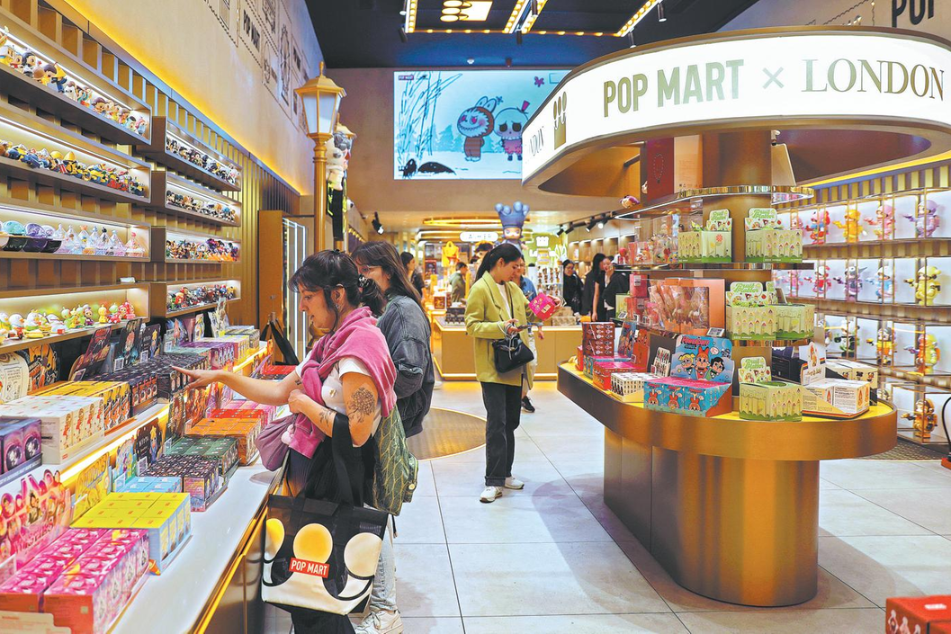Unwanted large public sculptures and fake invoices targeted
By MO JINGXI | China Daily | Updated: 2020-10-13 09:44

A number of ministry-level departments, including those responsible for urban-rural development, taxation, agriculture and medical products, have responded recently to matters of public concern.
Notice aims to rein in plans for large sculptures
The blind construction of large, unrealistic sculptures that fail to meet public demand will be strictly forbidden in Chinese cities, the Ministry of Housing and Urban-Rural Development said on Friday.
A notice issued by the ministry said the construction of sculptures with a height of more than 30 meters or a width of more than 45 meters will be strictly controlled and the building of such sculptures without adequate direction in the name of developing tourism or enhancing the image of cities will be forbidden.
Some sculptures have attracted public criticism for being excessively large, of low quality or inconsistent with the surrounding environment.
However, the notice also pointed out that a number of outstanding urban sculptures in various places have helped create a good public environment and enhanced local culture.
69.3b yuan in lost revenue netted by tax crackdown
Several ministries have cracked down on crimes related to the use of fake invoices and export-tax rebate fraud in a special campaign, the State Taxation Administration said on Friday.
The campaign was jointly launched by the tax administration, the Ministry of Public Security, the People's Bank of China and the General Administration of Customs in August 2018.
During the campaign, taxation law-enforcement departments investigated 275,000 enterprises accused of producing fake invoices worth 252.4 billion yuan ($37.7 billion) and recovered 69.3 billion yuan in lost tax revenue, the tax administration said.
During another campaign launched in March to crack down on enterprises that used fraudulent export declarations to enjoy value-added tax rebates amid the COVID-19 pandemic, a total of 3,495 enterprises were investigated for 13.7 billion yuan in illegal tax rebates, it added.

Grain output set to top 650m metric tons
China's grain output is expected to top 650 million metric tons for a sixth straight year, with the country having just finished its summer grain harvest and abundant yields expected this autumn, the Ministry of Agriculture and Rural Affairs said.
During the 13th Five-Year Plan (2016-20) period, local governments and departments across the country have implemented a strategy of sustainable farmland use and innovative application of agricultural technology, maintaining annual grain output at 650 million tons-about 470 kilograms per capita.
A report by Xinhua News Agency on Oct 4 quoted a ministry official as saying that China plans to maintain more than 1.13 million square kilometers of grain production area, including more than 533,000 sq km growing staple food.
To that end, the country will beef up efforts to develop high-quality wheat and rice, promote corn production, expand the area planted with soybean, encourage the planting of other grain crops, and increase the supply of high-quality, distinctive agricultural produce, the official said.
VAT cut to 3 percent on second batch of drugs
China has cut value-added tax to 3 percent on the import, production and sale of a second batch of anticancer and rare-disease drugs in a bid to lower costs for patients and boost the pharmaceutical industry, according to a statement published on Sept 30.
The statement, jointly issued by the National Medical Products Administration, the State Taxation Administration, the General Administration of Customs and the Ministry of Finance, said 14 rare-disease drugs, 39 anti-cancer drugs and six pharmaceutical ingredients of anti-cancer drugs would be included in a lower tax bracket from Oct 1.
China issued a first list of VAT reductions on rare-disease drugs last year that covered 21 drugs and four ingredients.
























